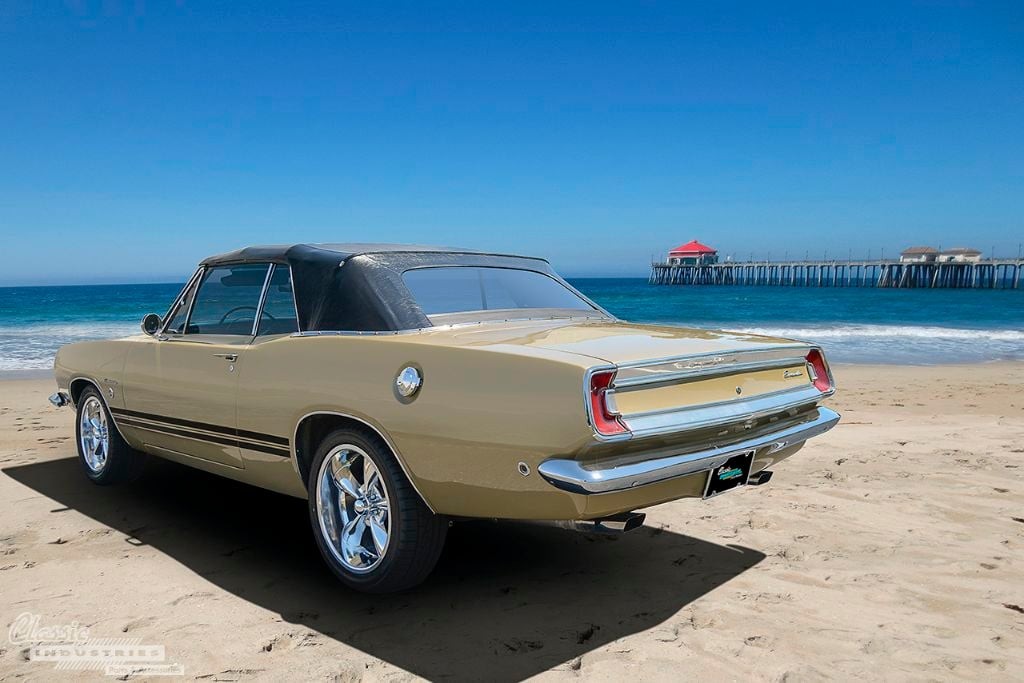The Plymouth Barracuda, a name synonymous with American muscle, holds a special place in automotive history. More than just a cool name inspired by a predatory fish, the Barracuda embodied sleekness, agility, and power. This article dives into the history of this iconic Mopar car, exploring its evolution across three generations.
The Barracuda transitioned between platforms during its production, starting with the compact A-body platform shared with the Plymouth Valiant, and later adopting the larger E-body platform alongside the Dodge Challenger. Let’s examine each generation in detail.
First Generation (1964-1966): Early Barracuda History
Initially, the 1964 Barracuda was a Valiant option package. Around 90% of buyers opted for the available 273ci V8 engine over the base 225ci Slant Six. Notably, 1964 was the only year the Valiant emblem graced the car instead of the signature fish logo.
The 1965 model year introduced the “Commando V8” version of the 273ci engine, featuring a 4-barrel carburetor, higher compression, and a performance camshaft. The Formula ‘S’ package debuted, adding suspension upgrades, special emblems, and a tachometer to the Commando V8.
The 1966 Barracuda received styling updates, including new tail lamps, front sheet metal, and a redesigned dashboard. Deluxe models sported fender-top turn signal indicators with a fin motif. Finally, the iconic Barracuda fish logo replaced the Valiant emblem.
Second Generation (1967-1969): Defining the Barracuda Style
The 1967 Barracuda boasted all-new sheet metal, distinguishing it from the Valiant. Available body styles included convertible, notchback coupe, and fastback. The 273ci V8 became standard, with the 383 big block offered as an option.
The 1968 model year brought engine changes, replacing the 273 with a 318ci small block V8. A 340ci 4-bbl small block V8 and the powerful 383 “Super Commando” engine joined the options list. A limited run of approximately 50 Barracudas were equipped with the legendary 426ci Hemi engine for Super Stock drag racing.
Performance took center stage in 1969, the final year for the A-Body Barracuda. The ‘Cuda trim level arrived, offering the formidable 440ci Super Commando V8. A unique “Mod Top” floral vinyl roof was introduced, aimed at female buyers.
Third Generation (1970-1974): The E-Body Era and the ‘Cuda
The Barracuda moved to the larger E-body platform in 1970, gaining a more muscular presence. Styling cues included single front headlights, a divided grille, and vertically stacked tail lamps. The ‘Cuda trim continued, offering potent engines like the 340, 383, 440, and the legendary Hemi.
The 1970 AAR ‘Cuda, a Trans Am racing homologation special, packed a 340 6-BBL engine, a fiberglass hood with a scoop, side-exit exhaust, and a ducktail spoiler. Rallye suspension and a Sure-Grip limited slip differential came standard.
The 1971 model year saw the departure of the AAR ‘Cuda, but the ‘Cuda trim soldiered on with a unique six-slat grille, quad headlights, and fender gills. Billboard stripes and rear louvers were optional. The Shaker hood made its final appearance.
Emissions regulations and rising fuel prices impacted the 1972 Barracuda, limiting engine choices to small blocks. The grille reverted to a design reminiscent of the 1970 model. Four circular tail lamps replaced the previous design. Cosmetic changes for the Barracuda remained minimal for the remainder of its production run.
The Plymouth Barracuda, with its aggressive styling and powerful engine options, cemented its place in muscle car history. Each generation brought its unique charm, contributing to the legend of the “fish.”


